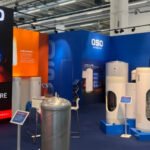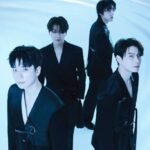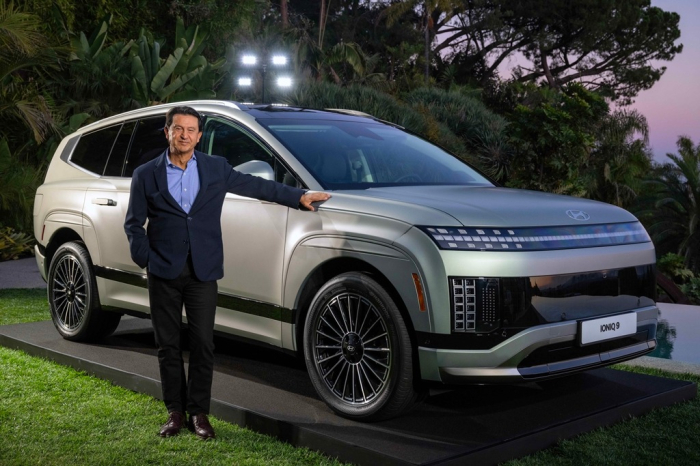
LOS ANGELES — Hyundai Motor Co. on Wednesday unveiled the IONIQ 9 with a plan to produce the leading South Korean automaker’s first large electric sport utility vehicle not only at home but also in the US to cope with potential tariff hikes on imported cars by President-elect Donald Trump.
“The IONIQ 9 will be manufactured at the new Metaplant in the state of Georgia,” said José Muñoz, its global chief operating officer (COO) and head of North and South American operations, at the electric vehicle’s premiere, referring to its EV plant in Bryan County, west of Savannah, which is scheduled to start operations this year.
“Together with the support of our EV plant in Ulsan, Korea, we aim to sell two million EVs per year globally by 2030,” he said at the EV’s world premiere event at the Goldstein Residence in Los Angeles.
In South Korea, Hyundai Motor Co. will produce the IONIQ 9 in Ulsan where the company is building a dedicated EV factory to produce 200,000 units of the eco-friendly cars in 2025.
Muñoz, named as Hyundai Motor Co.’s chief executive officer effective on Jan. 1, 2025, has repeatedly stressed it is necessary to have a plant where the company has customers.
Hyundai Motor Group is expected to increase its US production as the Trump administration is predicted to impose 10-20% tariffs on imported cars, industry sources in Seoul said.
TO RAMP UP US OUTPUT
Hyundai Motor Co. operates a plant with an annual capacity of 350,000 vehicles in Alabama and Kia has a factory with a capacity of 340,000 units a year in Georgia. Hyundai Motor Co. has recently completed the construction of Hyundai Motor Group Metaplant America LLC (HMGMA), which can manufacture 300,000 cars. Its capacity can be increased to 500,000 automobiles a year.
The Tucson SUV maker plans to produce hybrid models at the new plant, given the prolonged slowdown in the EV industry.
Hyundai Motor Co. is predicted to manufacture more hybrids than initially planned at the complex as Trump’s transition team is seeking to eliminate federal incentives for EVs, further hurting the clean car sector, industry sources in Seoul said.
Muñoz vowed to increase sales of hybrids in the US before, saying those models including plug-in hybrid electric vehicles (PHEVs) are Hyundai Motor Co.’s “important strategic topic” in an interview with foreign media.
The group’s US sales have grown since Muñoz joined the company in 2019. Hyundai Motor Co.’s sales rose 28% to 870,000 vehicles last year in the world’s second-largest auto market from 680,000 units in 2018. Kia’s sales advanced 32% to 780,000 cars from 590,000 units.
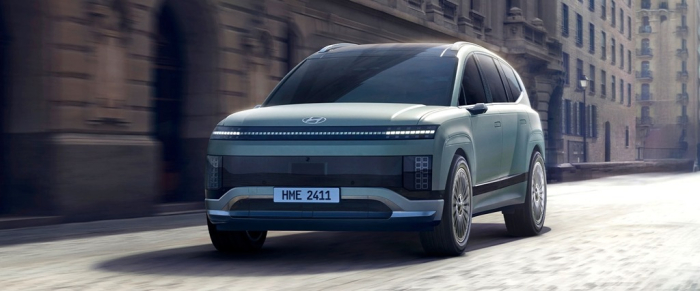
IONIQ 9
The IONIQ 9 is Hyundai Motor Co.’s first large electric SUV built on the group’s Electric-Global Modular Platform (E-GMP).
The company unveiled the three-row, all-electric model in Los Angeles to target the large SUV segment of the US, the world’s third-largest EV market.
“IONIQ 9 embodies Hyundai Motor’s unwavering commitment and confidence in electrification,” said Hyundai Motor Co. President and CEO Chang Jaehoon, who was promoted to the group’s vice chairman.
The SUV equipped with batteries of 110.3 kilowatt-hours (kWh) can travel up to the Worldwide Harmonized Light Vehicles Test Procedure (WLTP)-projected 620 kilometers (385.3 miles) on a single charge. The WLPT is a standardized laboratory test that measures a vehicle’s fuel economy, emissions, and electric range.

The IONIQ 9 is an appealing new choice for customers seeking a three-row EV that can accommodate up to seven occupants, Hyundai Motor Co. said.
Its flat floor accommodates seating arrangements for six or seven occupants, according to the automaker. The seats in the first and second rows can fully recline and offer a leg rest for comfort, allowing up to four people to rest during vehicle charging depending on the configuration. The IONIQ 9 also boasts 1,899 millimeters (mm) of headroom and 2,050 mm of legroom when the second and third rows are combined.
The IONIQ 9 introduces second-row swivel seats, allowing the second and third-row occupants to face each other when the vehicle is stationary.
ENHANCED ENERGY EFFICIENCY
Its energy usage efficiency is also enhanced by smoothing and balancing airflow under the body, and reduced wheel and tire resistance, the company said.
The IONIQ 9 is Hyundai Motor Co.’s first model to eliminate the roof antenna by dividing its functions between the windshield cover for the global positioning system (GPS) and satellite radio, the instrument panel for connected car services, and the tailgate glass for FM/AM and digital multimedia broadcasting, according to the company.
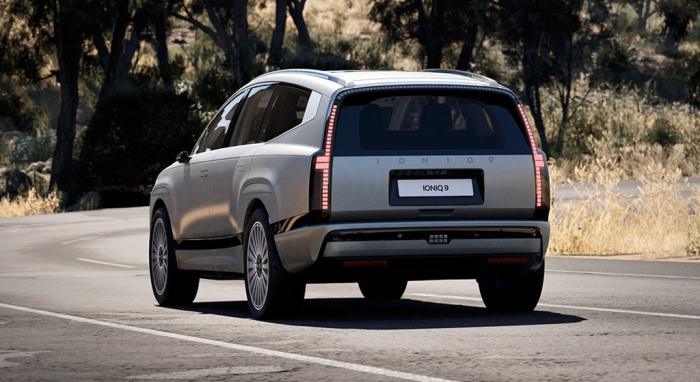
Exterior lighting aligns with Hyundai Motor Co.’s other EV models, featuring IONIQ signature parametric pixel lamps with small cube projection headlights and an intelligent front-lighting system (IFS) to improve vision and driving safety while preventing glare to oncoming vehicles. The rear features a full light-emitting diode (LED) combination lamp. For enhanced visibility, the outside door handles feature indirect lighting.
By Young Chan Song and Jung-Eun Shin
0full@hankyung.com
Jongwoo Cheon edited this article.


